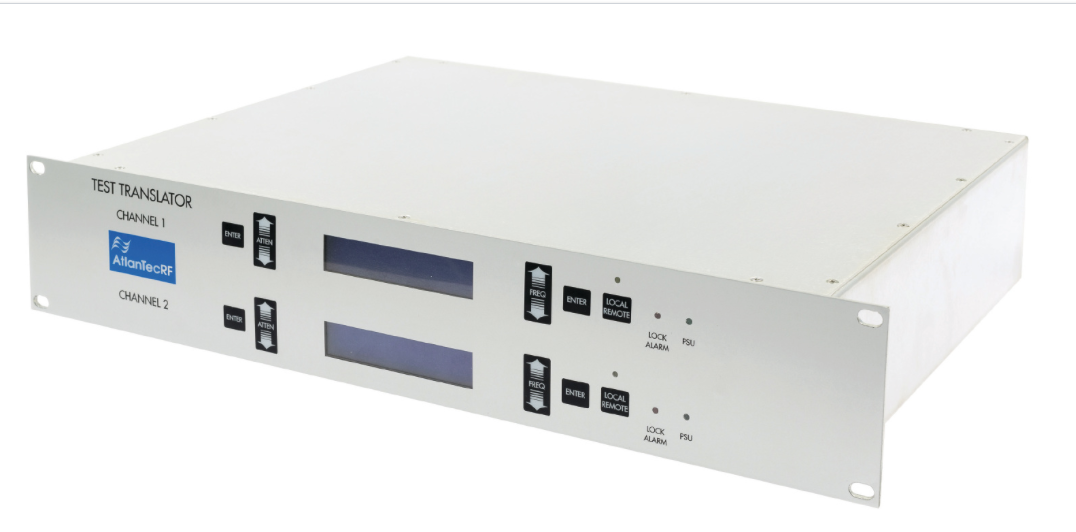
This company's new Ka-band unit makes additional choices available to users testing and monitoring signals at satellite communication ground stations and teleports.
AtlanTecRF, provider of RF and microwave components and equipment manufacturer, launched a Ka-band version of its Dual Channel Loop Test Translator featuring dual channel operation with the ability to introduce different transfer characteristics in each channel. This offers a great deal of flexibility in which one LTT instrument can be used in a variety of test applications for frequency conversions from Uplink (Tx) to Downlink (Rx) or to L-Band and from L-Band to Downlink (Rx).

The new Ka-band unit addresses the 30GHz uplink and 20GHz downlink market, and enables users to simultaneously test the Tx-L and L-Rx loops. LO phase noise at 27GHz for the Ka-band instrument is -110dBc/Hz at 1MHz offset and non-signal related spurious are guaranteed at below -60dBc.
The architecture of each channel contains a synthesized local oscillator (LO), the frequency of which can be changed in either 25MHz steps or 1KHz steps so that the Tx and Rx bands relate to the L-band modem frequencies of 950-1700MHz or 950-2450MHz.
The transfer characteristics of each path can also be defined independently in terms of attenuation range, conversion loss and filtering to suit the performance requirements of the individual station.
Control of both LO frequency and transfer attenuation can be managed either locally with easy-to-use touch controls or remotely via ethernet with GUI, and separately for each of the two links.
Frequency stability is assured with a choice of either internal OCXO with better than +/-0.05ppm over temperature or by an external 10MHz system source.
Geoff Burling, CEO, said that what makes their Dual Channel LTTs unique is the simultaneous translation of transmit (Tx) frequencies to L-band and L-band to receive (Rx) frequencies using one unit. By adding a Ka-band unit users now have even greater choice when it comes to testing and monitoring uplink and downlink signals at the same time.

